One of my favorite—and most missed—sounds from the Adirondacks.
Leisure
Cover Artist Lon Kirschner Interview

I love this guy’s work.
I “met” Lon Kirschner through author Marc Schuster, who had just published his novel, The Grievers. In my review of The Grievers, I had said, first line out of the gate, “He had me at the cover.” And that was true. As soon as I saw the cover, I knew I had to read it, so I contacted Marc, and later Marc had connected me with the cover artist, who was Lon Kirschner (Lon works with his wife and business partner, Nancy Potter; examples of his work are included in this interview). I’d since come to discover his website (Kirschner Caroff) and some of his work , we traded e-mails, and I thought, what a cool guy. Lon had told me that my review was the first time he’d ever been mentioned in a review. That kind of startled me. I thought—heinous! But the way his Grievers cover grabbed me shows the power of a well-made cover. I knew absolutely nothing about the story at that point (you know, we see covers first), but figured the “tone,” the message of the cover, was so superbly crafted that the story had to be well-written and quirky (I was not disappointed)! Covers get all kinds of boon and bane, why aren’t cover artists more frequently discussed—interviewed? That’s when I decided I had to interview this guy.
Lon could you give us a short bio on yourself?
My favorite bio is by Charles Davis, a wonderful author (who coincidently, I have done several
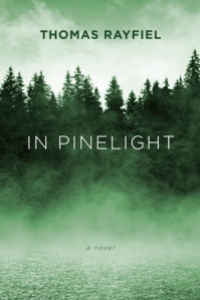
covers for). His bio reads: “Charles Davis was born and educated, and has traveled and worked. He now lives and writes.”
Taking his lead, here goes: Lon Kirschner was born and educated, and has traveled (a bit) and works (and works). He now lives (thankfully) and designs.”
Hmm… I suppose you want more.
I was born in Queens, NY. A short walk to the 1964 World’s Fair grounds. The Unisphere is without a doubt my favorite piece of NY architecture. Growing up I loved to draw and knew that art was something I wanted to do. This was in spite of a crabby elementary art teacher telling me that even though I was good in art didn’t mean I could make a living at it. So much for early education!
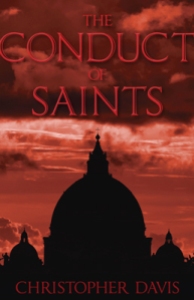
I applied to several art colleges with my dream choice being The Cooper Union. A wonderful school with a long history of producing extraordinary designers and illustrators (what was I thinking?). Upon acceptance, each student was presented with a 100% tuition-free scholarship (what was I thinking?), a legacy that has existed since 1859 but is now sadly changing due to a difficult economic climate.
To my utter surprise I was accepted! After graduation I started as a lowly studio assistant and worked my way up to a slightly higher level of lowly studio assistant at a small boutique studio in New York City. After 3 years I felt it was time to strike out on my own. I gave up a steady paycheck and began freelancing. After several years I joined with my old employer and we ran the studio together. Over the years, he played less of a roll until he retired.
I met my wife Nancy Potter, who was working at the studio when I returned. Together we have maintained the business as partners and have adapted to the vast technological changes in the industry.
When and how did you get into graphic design? Was it something you just always knew you wanted to do? Does artistry run in the family, and if so, how far back does it go (I love histories!)?
When I first got into the business, I wanted to be an Illustrator. I found typography a bit overwhelming and thought that it would be
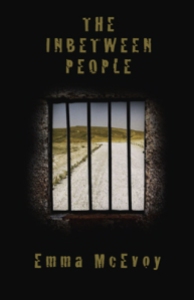
nice if all I had to do was draw pictures.
Reality set in, I needed a steady paycheck to cover my bad habit, playing drums in a rock and roll band. This required paying for rehearsal studios and gas to get to and from rehearsals and gigs. We were getting paid but you can’t pay bills on “all the beer you can drink.” When it looked like the big record deal wasn’t happening it was time to move on and start building my career in art.
My day job was at a studio that produced graphics for a very broad group of clients, including assignments for movie campaigns, corporate identity, logos, packaging and publishing. I had learned a great deal and my typography phobia was alleviated. I was ready to put down my drumsticks and concentrate on graphics.
You asked about artistry in my family. My mother’s sister is a very talented person. She was a singer and also paints, draws and works in various media. If there was a connection to anyone in the family as far as “art” is concerned I would say that is it, but it all depends on what you consider art. My grandmother and mother were fantastic cooks. They could open a refrigerator (I would see an egg and some capers) they would see the makings of a five-star meal. When I think back on that there was definitely an element of art involved. Art can come from anywhere.
Excellent point, Lon! “Art” is not just about graphics and typography…it’s also about eggs and capers! What is your earliest memory of the first manifestation of your talent?
Drawing pictures with my friend in first or second grade. Cowboys and Indians and army battles. Other kids played them, we drew them.
Love that last sentence! What medium do you prefer to work in?
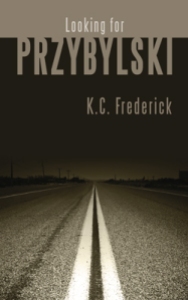
When I started in the business, it was all paint, pencils, rubber cement and razor blades. I was big on airbrushing but not so big on wearing my protective mask. Refer back to my answer for the bio question “He now lives (thankfully),” I must have inhaled gallons of dyes, acrylics and whatever else I could manage to spray. I was young and didn’t think about it.
Now it is all computer. It’s great to be able to set my own type, composite photos, produce comps that look printed and send files all over the world. The bad part is that many people (dare I say clients) think changes are simple and can be made at a moment’s notice. This gets into the whole concept-versus-production question. Don’t get me started. I see in the later questions that I will get my chance to state my case. If I sound to whinny, feel free to edit. No one will know (except me).
When and how did you get into book covers?
When I started freelancing, a friend of mine from college was working in the art department at Simon and Schuster. She told me I should come up and meet the art directors that gave out the assignments. I looked through their catalog and picked a few titles that I thought had less than inspired covers and redesigned them. I went up with my new book cover portfolio and landed some assignments. Most of these were in the “How To” genre, but I was happy to get the work. Another friend was working at Viking/Penguin. She invited me up to meet the creative director. I brought some of my airbrush paintings with me. He liked the work and handed me a rather long manuscript for a new book by an unknown author. The book was The Broom of the System, the first novel by David Foster Wallace. I did the cover illustration, the type was handled by their in-house art director. The cover was produced simultaneously as a dust jacket for hardcover as well as a paperback. I have the paperback, the hardcover was a limited run of 2,000. You can find them on ebay selling for fairly high prices.
How cool! You have pedigree! Could you describe your process for creating a cover?
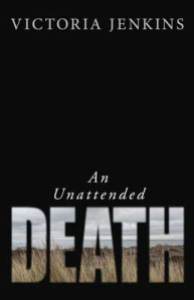
My design process for a book cover is fairly simple. I read the entire manuscript, if it is available. I then think about it for a while and then I start working. Many times where I started is not where I wind up. There have been happy accidents that take me in a whole new direction. The basic concept may be the same as when I started but the visual is totally different than what I originally had in mind. The truth is, most often than not I get an idea somewhere along the way, as I am reading. If it comes early I keep reading because there is always the chance that the idea won’t work out. People have commented to me that I really don’t need to read the entire book, a brief will do. Sometimes that is true, but I find more often than not ideas that come from a full manuscript would never have materialized if I had just read a few descriptive paragraphs. Books are like people, you need to go the distance before you really know them.
My goal is not to illustrate a particular scene in the book, but to convey a sense of what the book is about.
I’m quite impressed. So much of today is hurry up, do it yesterday, speed x 3! It’s nice to see you put in the in-depth interest, analysis, and effort. I’ve heard of so many dissatisfied authors, when it comes to their covers….
Okay, Kirschner Caroff is a full service graphic design and consulting company. You’re not “just” about book covers. You do all kinds of work: packaging, “corporate identity” work, movie posters, logos—can you explain a little about them, and if the processes for any of them is any different between them?
As a small studio we tend to “specialize” in all types of work. I have learned over the years that basically all design projects share
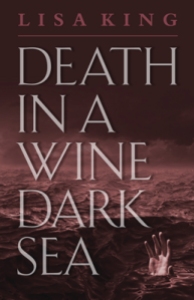
something in common. If they are going to be successful, they need to be built on a concept. Of course execution is important, but if the concept is lousy, the best execution won’t make it a good design. In our digital world where everything and anything is possible I feel that this crucial concept is sometimes forgotten. My philosophy is keep it simple, keep it focused. Communicate in the least complicated way you can. We are in the business of communication. If your audience doesn’t get the point, you failed. It would be like writing a book in Russian for an English speaking audience. Not everything needs a special effect. In fact, in a world gone special-effects crazy, sometimes it is the simple things that make the greatest impact. I am all for effects and digital magic if they enhance the design. We all know you can put a monkey’s head on a man wearing a suit and make it look real. If that’s the right solution for the job go for it. If not, rethink it. I myself have put a few weird things in a suit, but I think I was justified.
Less is more! That was one of the reasons your cover for The Grievers really grabbed me! Such powerful subtlety! Is there a different process when working with a publisher than when you directly freelance with an author?
The process of working with an author is very different than working with a publisher. An author has a very personal relationship with their work. They have thought about it and worked on it for possibly years. They are so close to it that it is sometimes difficult for them to take a step back and look at it in a different light.
Many authors have ideas that they think are perfect, but in reality they might not be the best solution. I listen and see if there is something I can use, but if not, I go my own way and do what they have trusted me to do. It usually works out. In fact I can say it

always has worked out. I have had a few rough ones along the way, but in the end, solutions were always found. There have been times when an author makes a suggestion that takes a concept from being a good solution to a great solution. I try to leave my ego at the door and listen. If a suggestion is made that may work, I am happy to try it.
Publishers are easier because there is less emotion involved. The cover I am working on for them is one in a long list of projects they need to get done. There isn’t the same personal interests. When you work for a small press, many times the author does get involved. I have met some very extraordinary and wonderful people over the years, I actually consider it a benefit of the job.
Great point, the contrast between authors and publishers. How did you get to work for Permanent Press (or any other publisher)? Can you give us a list of some of the other publishers you’ve worked with?
I sent out a printed mailer to about two hundred publishers that looked interesting. Mostly fiction. Martin Shepard (Permanent Press) called me in response to the promotion. We had a great conversation, he explained he was a small publisher and probably couldn’t afford it. I asked him what his cover budget was. After he answered I told him he was right, he couldn’t afford it. The problem was I got such a good feeling from him that I made him a proposal. I told him if he could send several books from his list I would do it. The old make-it-up-in-volume approach. He agreed and that was the beginning of a twenty-plus-year relationship. As the years went by, I got more books per list. I am now the de facto Permanent Press Creative Director/Art Department. I now do around sixteen books a year for them.
Over the years I have worked for Bantam/Doubleday/Dell, Simon and Schuster, Viking/Penguin, Paragon House, Northwestern University Press, Aldin DeGruyter and a host of smaller independent publishers.
What’s your typical work day like?
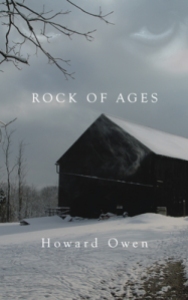
There is no such thing as a typical day. You can sit down to work and think you have your entire day planned and then the phone rings and everything goes out the window. It’s the nature of the beast. Feast or famine.
Rock and roll! Are there other forms of expression: a) you’re already doing, and b) you’re not, but would like to do?
My first love was illustration, but I seem to have gotten further and further away from it. A lot of the solutions tend to be more photo illustration. I would like to get back to doing artwork in a more traditional manner, or maybe a combination of digital and traditional. I still dream of doing an illustrated children’s book. It doesn’t even matter if it sells. Just completing that goal and having it done would be a very satisfying experience. I have several ideas and partially written manuscripts that no one has ever seen. It’s my secret. I love doing what I do, but having a book of my own would be very special.
Hmmm…ever consider indie publishing, or Creative Memories? I know a great Cover Guy…
What do you like to read, currently reading?
I like to read fiction. Things that take me away from the everyday. I love mysteries. I am currently reading one by P. D. James. I also enjoy the broad sweeping historical novels. I have Sarum, by Edward Rutherfurd waiting in the wings. I read London and really enjoyed it. I actually was reading it while we were on a UK family vacation last summer.
What do you feel is the [real] impact of cover art [on readers? Publishers? Buyers? Authors]?
Many years ago the creative director of Bantam books told me that if he could get a person to pick a book up in the store based on the
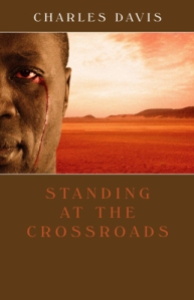
cover then he had done his job. He couldn’t walk that person to the cash register, but by getting them to pick the book up the first part of the buying process had begun.
In the digital age the concept is the same, you still need to grab a reader’s attention. This is what authors and publishers expect and want. I feel covers are just as important now as they ever were, maybe even more so. Delivery methods come in all forms, but whether it is print, tablet, computer screen, or e-reader, a cover still needs to be impactful and compelling to the reader. If this weren’t true, all you would need for a cover would be a black-type title on a white background. A book cover is part of the whole package. It is the package. Sometimes the first impression a reader will have of a book will be based on the cover.
The internet has changed the way we buy books. When I am at an online site to buy a specific book, I very often see a cover that looks interesting and click on it to get more information. I have bought many books because the cover caught my attention. I may be a little more critical than others, but I think it works the same for everyone.
So, you can judge a book by its cover! How many projects do you have going on at any one time?
It varies. Right now I have about 13 or 14 books that need to be finished by the end of the summer in addition to some other corporate
work. The problem has always been that you think you will get to something and then another project with an earlier deadline comes in, you have to put something aside to get another project out the door. It’s all about time management. I am proud to say, the studio has never missed a deadline. We’ve missed some sleep, but never a deadline. This is a service business. You can do great work, but if you miss the deadline it doesn’t matter, you’ve produced the greatest design that no one will see.
Go on, Lon, get Zen, in any way you feel necessary about your business/efforts/work!
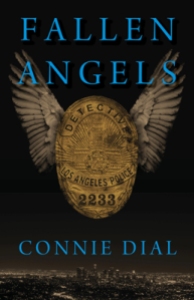
I love what I do. The wonderful part is that it is never quite the same. Each project is different and requires a unique solution. Some are not as exciting as others, but every project requires you to think differently. I don’t go to work every day and push the same piece of paper around. Some days are harder than others but that is probably the same for everyone no matter what they do. I produce something that is unique to me.
I still see things I designed years ago; it’s a very satisfying feeling. This past year we received an inquiry from The Canadian Museum of Civilization asking about using the cover art from The Magic Island as part of an exhibit on Voodoo. It is running now at the museum and will then travel throughout North America. That was a great feeling. I painted that cover many years ago using airbrush and traditional production methods. It won a Society of Illustrators award the year it was produced. After all the time that has gone by it’s exciting to see it have a new life and still remain a relevant design.
I am always happy to speak to people about possible projects. It’s part of what makes this exciting. You never know what the next call will bring.
Lon, if you were to have a gravestone, what would you have engraved upon it?
I hope I will have a gravestone or something to let the world know I was here. I think it would read: “There’s never enough time in the day.”
Thanks for your time, Lon! And I look forward to working with you on the cover for my next release, ERO!
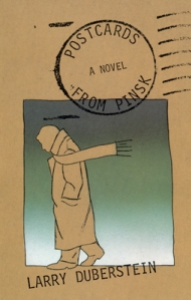
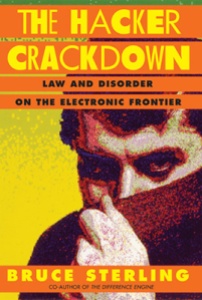
And…he had me at the cover:
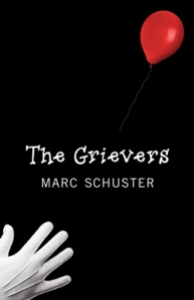
To contact Kirschner · Caroff Design Inc., for freelance:
Phone: 518/392-3823
E-mail: info@kirschnercaroff.com
Website: http://www.kirschnercaroff.com/section-pages/contact.html
Embrace the Shake!
This 10-minute video is incredible. It talks about embracing our limitations. Period. It’s a presentation given by Phil Hansen, an artist, and how he turned a shaking disability into an asset. It is a lesson to all of us about anything that goes wrong in our lives. This guy is amazing, his creativity, his will to be…to create art.
It’s a lesson in “going around the rocks,” I like to say. When you have some kind of obstacle, go around them, find another path. In writing this can be applied in so many ways, not the least of which are writer’s block and methods of publication. But it’s about so much more, about how to overcome any adversity and move forward, still making the world a better place by finding within oneself the beauty one still has to share with the world. We all have our issues, some worse than others, and sometimes we need to mourn. But, once we get past that, we need to find a way to bring our gifts into the world, whether it be a smile and a helping hand, or the creation of art. It may sound trite, but after watching this video you might well find yourself thinking: the only limitations are the ones we put on ourselves.
Embrace the shake!
Related articles
Marc Schuster…Renaissance Man!
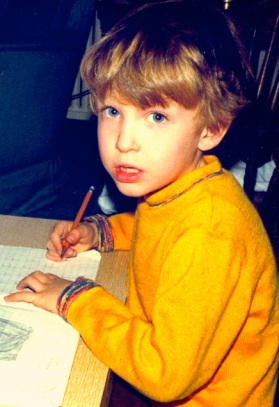
I met Marc Schuster, who had just published his novel, The Grievers, through the Internet. That is to say, I met Marc through the Internet—he did not, in fact, publish his novel through the Internet (that was with The Permanent Press). I forget exactly when and how, but I swear it must have been that he visited my blog and “Liked” one of my posts. As I always do, I check out those who leave a “Like,” because, well, I’m not famous, and only have a handful who do that, but that’s probably how I found out about him. At the time (this had to be in early 2011 or 2012…time has a way of warping for me…) he had not yet published The Grievers, and was asking for reviews. I checked out the book—was absolutely grabbed by the cover (and the quirky story)—and asked for a copy. Here is my review of it. Marc also devotes much of his life to promoting independent publishers, through his Small Press Reviews site. Anyway, ever since, we’ve interacted through blogs and e-mails (again, in either 2011 or 2012, I was listed as “Stalker” on his end-of-year stats WordPress publishes to it users), and I found him to be quite the “stand-up” guy (pardon the predictive pun; keep reading). Plus, he’s smart, and I like to hang out with smart people (or, I should say, I need to hang out with smart people). He’s also what I call, a “Renaissance Man.” I only know one other person I use that term with, and it’s my writer/producer/actor/blah-blah-blah brother, Greg…but, never mind him (for now). I’ve been wanting to get Marc and his bow ties on the “chopping block” for a while, so….
Marc, curious minds beg to know: do you sleep?
It’s funny—I used to have trouble sleeping, but I’ve gotten much better at it in recent years.
Could you give us a short bio?
I lived in Northeast Philadelphia until I was about thirteen, and then my family moved to the suburbs. This is actually turning out to be a significant detail in my life, as I’ve been meeting a lot of writers from that neighborhood lately. Shaun Haurin, who wrote the short story collection Public Displays of Affectation; Marie-Helene Bertino, who wrote Safe as Houses; and the indie-film producer Keir Politz all grew up within a few miles of my childhood home. We all focus on the same subjects in a way that I think has a distinct Northeast Philadelphia bent. Now I live in Havertown, which is a suburb of Philadelphia. Someone recently told me it’s “where the writers live.”
You teach writing and lit courses at Montgomery County Community College in Blue Bell, Pennsylvania. You write. Paint. Compose. Now, do podcasts. Got ADD?
Actually, yes. I was diagnosed in 2011. In fact, it’s taken me over twelve hours to answer this question.
Has writing always been in your blood? Has teaching? Have podcasts, painting, and compositions?!
Technically speaking, I guess podcasts haven’t always been in my blood, but I used to record radio dramas with my friends on a brown Fisher Price tape recorder when I was eight or nine years old. I’m sure that the tapes are floating around somewhere in my parents’ house. If I can find them, I might even start posting them when I run out of fresh material for my podcast. As for the other activities, I’ve always enjoyed art and writing. In fourth grade, I would write knockoffs of Doctor Who episodes. My hero was called “the Detective” and I distinctly remember that one of my stories was a recycled version of “The Robots of Death,” which I titled “The Killer Robots.” I probably spent more time drawing a picture for the cover than I spent on the story. As for teaching, I had a pretty strong sense that it was what I wanted to do from an early age if only to give me an excuse to wear a bow tie every day.
Interesting. Would love to hear those tapes! Marc Schuster: The Fisher Price Years….
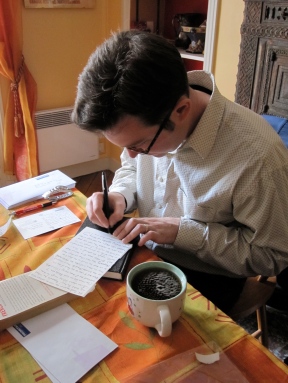
So would I! I’ll have to try dig them up. Hopefully I didn’t record “Mr. Roboto” over any of them.
Dōmo arigatō. Okay, pretend you’re bellying up to the bar, Marc. What’s your pleasure? Do you prefer one activity over another?
I think that’s the problem—I enjoy them all. Or at least I enjoy one activity until I get bored with it, and then I move onto the next one. Fortunately, they complement each other. I’ll write until I hit a wall, and then I’ll paint for a bit, or work on editing one of my podcasts. The only part of my life where I can’t be so—flighty, I guess—is teaching, because the deadlines are always pretty tight. When you have sixty papers to grade, it isn’t a good idea to let them sit for too long. They need to get done.
What would you be if you weren’t a Renaissance Man?
Depressed verging on miserable.
So, see, there is truth to the urban legend that writers write to keep their sanity! It’s like, psychologists are actually trying to figure themselves out, and MDs “healing thyselves.” Themselves. You know what I mean.
Yeah, and I wonder if people in general would be happier if they were encouraged to express themselves in one way or another—or at least if it were considered less “odd” to engage in creative pursuits. So many hobbies in our culture revolve around collecting—which I see as a form of consuming. We don’t really encourage more creative hobbies. And a lot of the time I get the impression that people are shy or embarrassed when it comes to admitting that they have a creative side. So what we get is a culture full of people who bottle everything up and end up miserable because the overwhelming message of society is that happiness comes from accumulating more crap to fill the void rather than staring down the void and coming up with a creative way to express our feelings about it.
Totally agree! “Buy more!” “Keep up with the Joneses!” What’s your take on the current state of publishing? Or, perhaps, would a better question be on the state of reading?
You make an interesting distinction. As a business, I think publishing is in a state of unprecedented flux, and the people who want to make money in the industry are trying everything they can to turn a profit. I don’t think that this desperation helps readers, though, because the ceaseless hunt for blockbusters doesn’t allow big publishers to nurture and develop budding writers. That’s where small presses and independent publishing step in. For the most part, they recognize that what matters over the long haul is quality—however it’s defined. Growing an audience and developing a readership. One way to do that is through what I’d describe as a kind of curatorship in which publishers—and reviewers, to a certain extent—find writers whose work they enjoy and then promote their work to like-minded readers.
Interesting…now, you also make a nice distinction: how reviewers are part of that curatorship of developing writers. I don’t think that’s anything to sneeze at (I just sneezed a moment ago). We could do a whole “thing” on reviews, but in reading your reviews I find that, yes, they do bring new writers to readers (that is, your reviews do this; I’ve read other reviewers who are only out to rip others a new one, or prove how much more intelligent the reviewer is at the expense of the writer). It brings to mind how I like to think of social media: sure, authors can and should use it, but I think the real benefit comes from the readers who find someone they love (or hate) and “backyard gossip” them up. Create the much touted “buzz.”
That’s the great thing about social media—and why I gravitate more toward “long-form” social media like blogging and podcasting rather than abbreviated platforms like Facebook. On a blog, it’s not only the case that you can go on at length about a new author you’ve discovered—or your favorite recipe, or a city you’ve just visited—but it’s also expected. Bloggers are ultimately sharers, and I feel like I’ve really gotten to know a few people online—people who are spread not only across the country but around the world—by following their blogs. (Yours, of course, chief among them!) And I hope that people who read my blog feel like they’re getting to know me.
You’re too kind, but thank you, sir. I definitely feel like I’ve gotten to know you much better over the past year of two. Given your erudite background, what’s your take on “today’s youth”? We constantly hear about the steady “dumbing down” of Humanity. I had recently heard the average global IQ level has dropped 3 points since the 1950s? Are Smartphones to blame? The Internet? Frank Dearborn?
Funny you should mention Frank Dearborn, since I think that one problem I have with education in recent decades is the way that it’s marketed. I can’t go anywhere without seeing a billboard for a college or university that touts things like ease and convenience. The basic message is that you can get a degree from home without ever getting out of bed. And then there’s the promise of financial gain, the idea that getting a degree from a particular college will provide you with the skills you need to get the job you want. Apparently the marketing experts aren’t consulting with the teachers, because as it turns out, earning a college degree involves a lot of hard work. More to the point, the purpose of a college education is not, in my opinion, to provide discrete job skills. It’s to give students perspective, to allow them to think about the big picture, how everything is connected, to develop a way of thinking that isn’t just a matter of ticking boxes and filling in forms. But that’s hard to sell, and it’s even harder to measure. Yet we live in a results-oriented society that wants to see one-to-one correspondence between time, effort, and money spent and return on the investment. The questions stops being, “How will all of this change the way I think about the world?” and becomes instead, “How will this particular thing you’re telling me right now apply to the job I want.” It’s a frustrating variation on “Will this be on the test?” I want to help students build systems of knowledge, ways of knowing themselves and the universe and how the two are related, and they want me to give them disconnected facts—trivia, essentially. Of course, I don’t blame them. They only want what they were promised.
“Promised”…or developed into? The Internet is Evil, commercials the Devil’s Candy, and movies are about exploiting sex, images of must-haves/must-bes, and whammy shots. As I look over your work…The Grievers, The Singular Exploits of Wonder Mom and Party Girl, The Greatest Show in the Galaxy, and Don DeLillo, Jean Baudrillard, and the Consumer Conundrum, they all seem concerned with consumerism in some way. Might that be your Moby-Dick?
It’s definitely a theme that fascinates me. I understand that business is business and that corporations need to sell products and services in order to keep the economy strong and give people jobs, but I also worry about what the constant drive for higher profits—a quest for the white whale if there ever was one—is doing to us. Everything gets boiled down to a commodity. I mean, I even hear it among some of my writer friends. They don’t talk about the books they’re writing. They refer to them as properties. I mean, really? Properties? And then there’s always talk about building a platform as a writer and branding oneself as a writer—and that gets right to the heart of my worries about consumerism. We’ve absorbed so much from the world of marketing that we’ve come to think of ourselves as commodities.
Do not get me started! You seem to tend toward the quirky, if I “read” your Small Press Reviews correctly. Does this bear itself out in your everyday life? Are you quirky, Marc? Give examples. Support your thesis.
I think I have an appreciation for quirkiness and a quirky sense of humor, but my life is fairly predictable. Gustave Flaubert once said that writers should be regular and orderly and live bourgeois lives in order to be violent and revolutionary in their work. I’ve more or less taken that to heart but substituted “quirky” for “violent.” When school is in session, I wake up at 5:15, get dressed, eat a bowl of granola, and head out to work. On weekends, I grade papers, mow the lawn, do laundry, and make enough granola for the coming week. Every two weeks, I buy three pounds of rolled oats so I can make more granola. Basically, my life revolves around granola. And bow ties. I really wish I had more occasions to wear bow ties.
I’ve always wanted to use “Flaubert” in a sentence. What’s your typical day like? Are there even 24 hours in it? I think you run on 27.
I guess it depends upon the day, but a few things remain relatively constant. I’ll usually have a cup of coffee in the morning—or two at most—before switching to decaf. I’m like Karl Childers in that respect. Too much coffee makes me nervous. When I’m teaching, I’ll meet with my classes and attend to other school business throughout the day. When school’s out, I’ll try to get as much writing done as I can in the morning, and then catch up on my reading in the afternoon. After dinner, my wife and I will usually go for a walk. All of the other work I do happens in the interstices—whenever I get bored or restless. Which is fairly frequently.
Dammit, you made me look up “interstices.” See, I really do need to be around smart people, not smartphones. You’re “living the dream”! But I think you touch on an important point…restlessness. The restless mind. I think this important for the writer mindset—heck, Humanity, if you get right down to it. Do you really get “bored,” or are you just always looking for the next curiosity?
I don’t know if I always go looking for the next curiosity. A lot of the time the next curiosity finds me. Maybe that should be a corollary to the saying about opportunity. When curiosity knocks, open the door and let it in.
Every time I answer the door, I find a burning paper bag before me. Are there other forms of expression: a) you’re already doing, and b) you’re not, but would like to do?
I like playing music. I do some recording from time to time, but I find that it eats up a lot of time. I can spend hours on a thirty-second piece of music, and then I start to obsess over all of the other things I could have been doing in that time, so sometimes I’ll just give myself an order not to record any music until I’ve completed another project. For example, I’m working on a new book, and I’ve given myself a pretty strict and somewhat unrealistic deadline for it, so I’ve decided not to work on any music of my own until the project is done. If someone else calls me up and asks me to play on a recording, that’s a different story, but for now, I’m doing my best to resist the sirens.
In terms of what I’d like to do, I’ve always wanted to try my hand at standup comedy, but the prospect of tanking is too daunting. The unfortunate result is that whenever I get in front of an audience at a reading, the majority of my allotted time goes to testing out material I would have tried at a comedy club.
Okay, didn’t see that coming. Was trying to envision what you’d say. I failed. Funny thing is (pardon the paronomasia—see, you’re rubbing off on me already!), I can really see you doing this! Your dry delivery. That voice. You come out on stage all “professored up,” sporting white gloves and holding a red balloon—you never acknowledge nor draw attention to the gloves or balloon, but you hold on to said balloon the entire time, switch hands, tie it to the nearby stand as you juggle and deliver your deadpan. Then take your balloon and leave. I’d pay.
That sounds a lot like my approach to teaching, so I’m glad to hear that my students are getting their money’s worth.
I don’t even want to ask how many projects you have going on at any one time….
It’s hard to say. I’ve never really done a complete inventory. Usually I’ll have about two or three unfinished novels on my hard drive at any given time, along with a handful of ideas for essays and short stories. Projects like these tend to loom over me for years, but that’s how I maintain the illusion of productivity. I’ve been working on the book I want to finish this summer since, I think, 2008. It’s been through at least three very different drafts, each with a completely different cast of characters, and they’ve all fallen by the wayside before I’ve managed to complete them. In the meantime, I was finishing projects that had been going since years earlier. I think I’d been working on my “first” novel since 2003 when it was initially published in 2009, and I actually started The Grievers a year earlier, in 2002. Meanwhile, I’d been working on my dissertation from about 2002 to 2005—and then I worked on it some more when it was going to come out as a book, and somewhere in there I squeezed in work on the Doctor Who book, which was my first. So, really, I’m just always juggling projects, and the fact that every now and then I complete one makes it look as if I’m producing a somewhat steady stream of work, when in reality nothing could be further from the truth. Everything else—the short stuff—is just there to keep me busy when I get stuck or bored with the big projects.
In stitches…interstitial…intersteecees…is there anything else burning inside with a need for expression?
At the moment, I’m just trying to do as much as I can in the time allotted to me.
Well said. If you were to have a gravestone, what would you have engraved upon it?
Life is good.
Thanks for your time, Marc, always a pleasure and quite enlightening!
The pleasure was all mine! Thanks!
Find out more about Marc, at:
Marc Schuster’s website: http://marcschuster.wordpress.com/
Marc Schuster’s Small Press Review: http://smallpressreviews.wordpress.com/
Les Chats Ninjas
Okay, these cats are cool….
Going Indie—What I’ve Learned (So Far)—Part 4

The Uninvited became available on barnesandnoble.com May 23.
This is the last week to get The Uninvited for free, through Smashwords. Starting June 1st, I’ll be charging $3.99. Thanks to everyone for all the downloads!
Okay, some more things I’ve learned along the way, about intruding into the land of the traditional publisher:
- This might sound obvious, but clean out your e-mail once in a while! Yeah, it will get overloaded, especially once you start adding all kinds of social media and accounts, etc. Can either do it as you go, or muscle through it all at once, but also remember the “source” email accounts. I.e., if you use one email account that, say, is used to for Outlook, or forwards to other accounts/locations. YOu may clean out Outlook files, but you’d still have Hotmail or Google, or whatever you use accounts to also clear out. I haven’t found a way to do this from Outlook.
- The book itself: in your Acknowledgements, Notes, etc., if there’s a family member you want to also include, make sure to make a note to include them beyond your research people you’re thanking. It can be embarrassing. In Indie publishing, you can always update that later, and re-upload. You can mitigate that in the interim by posting a blog thanking them, but sometimes, in all the rewrites, things get lost, and there’s really no one looking out for you, like an editor.
- I created a press release, at http://www.prlog.org–took a long time to get “approve” e-mails, so do the account creation early, and boy, it seemed rather intricate in its process and the “user friendliness/ obviousness” of some of the process just wasn’t there, depending where you are, say, when buying “credits” to get additional umphf for your press releases. So, if you want the $49 credit beyond the basic press release, buy it early, when creating your account.
- Also regarding PRLog.org, if you don’t get your e-mail verification soon, go back and select for resend. I really wanted to get this out last Friday, and almost blew my desire to send out then, because, even though it said you’d get that email in “a couple minutes,” I never saw it, came back at the end of the day, still never had it, and reselected the resend verification–ended up sending out late in the day, Don’t know if that hurt me, but it was highly annoying….
- Sign up for Pinterest: quick, easy, and fun!
- Sign up for About.me. Quick and easy, but wonder how useful it is (sorry, About-dot)? That might be the “About.com” stuff you always see in search engines that (IMHO) never seems to add much to my searches, so I always avoid checking out, but, hey, Smashwords recommend them, so I did it.
- HARO: not so sure about this. This might be more for nonfiction, but I signed up to see if it’s worth it. Be warned, only do this and subscribe to their emails if you’re really gonna use them! You’ll get tons, and if you have more than one email account, and forward them, or have any kind of back and forth between emails forwards, this could get very busy in keeping clean. I killed all my subscriptions, but kept the account, because they just didn’t interest me, and they seemed like doubles and triplicates of the same email you got the first time. You’ll probably also get a phone and/or email from their parent company, VOCUS, looking to sell you an Internet marketing plan—not a bad thing, but that’s what that call is about, if you get it.
- I tried LinkedIn again, and signed up. Have my reservations about them, because they always send such ANNOYING “come join us” emails! For each of you out there, you can try this, to shut them off at the get-go: if you don’t want to be contacted to JOIN LinkedIn, see if this link works (I haven’t tried it and if I do, my account gets terminated: go to http://help.linkedin.com/app/answers/detail/a_id/426 (guess it doesn’t hyperlink, so copy and paste in your browser). If this doesn’t work (it should) go to LinkedIn and search their Help for “Adding or Removing Your Email from Do Not Contact List,” or get someone who is part of LinkedIn to access this help page to input your email on their “Do Not Contact” list. According to this Help Page, if you enter your info into here, you are blocked from receiving those annoying e-mails. I hope so, Please, do Humanity a favor, and send this to everyone you know, if it works, and please, let me know if it does work! Most in LinkedIn I’ve talked with about this problem didn’t even know those e-mails were “on their behalf.” They’re auto generated. I suspect that when one imports their email contact lists into LinkedIn, that’s how they get the info to auto generate their “invites.” I have not done that, just because of that thought, so I hope no one gets an auto-generated invite from me, but if you do, contact me about its (fpdochak@fodorchak.com). I might get terminated from LinkedIn, because of this, but oh, well. Do note this, however: if you associate your own email address used in YOUR LinkedIn account, your account will be terminated.
- Also keep in mind, once yu create all these social media accounts, the trick is also to keep up on them, check in on them once in a while. Hey don’t run themselves, you know! :-] I’m trying to do that, but am still dealing with “collateral issues,” from all this mass-creation, so have not yet been as good as I should be in that respect. Who knows, I might even drop an account or two, depending on how useful that are [not]. But just keep that in mind when “willy-nilly” creating all this stuff….
Okay, that’s the latest, and exhausts my current notes. I really want to consolidate and put out on Slideshare.net, so look for that in the future. I don’t yet even have an account there. Hope I’ve been able to help out on some of the less-obvious tips. I must say, that things have gotten back to much better pace, since I’ve created all this stuff, just as Terry Wright said it would (thanks, Terry).
Related articles
- The Uninvited – LIVE at Smashwords! (fpdorchak.wordpress.com)
- The Uninvited (fpdorchak.wordpress.com)
- KA-BAR and The Uninvited – Not For The Squeamish (fpdorchak.wordpress.com)
- Going Indie – What I’ve Learned (So Far) (fpdorchak.wordpress.com)
- Going Indie – What I’ve Learned (So Far) – Part 2 (fpdorchak.wordpress.com)
- Going Indie – What I’ve Learned (So Far) – Part 3 (fpdorchak.wordpress.com)